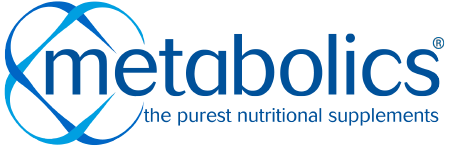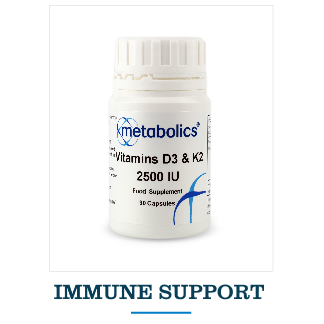We all know about Genetics, understanding that we are all born with genes composed of DNA and made up of a sequence of nucleotide bases in a particular order that we inherit from our parents. We are all familiar with the concept that our genes are responsible for our eye colour, hair colour and predisposition towards disease states such as breast or prostate cancer.
Scientists once believed that genes were fixed from the moment of conception but research since 2004 has demonstrated that genes can be turned on or off and are subject to environmental influences such as nutrition, stress and emotions.
Epigenetics literally means “ On Top of the Gene” ,so the DNA that you have inherited remains in the same sequence but these other factors such as nutrition and the chemicals produced by stress and emotions determine whether that gene that you have inherited is expressed and the disease manifest.
Epigenetics internationally, is an emerging science, following the completion of the mapping of the human genome, scientists are gathering increasing evidence that nutritional factors in particular can affect the expression of the gene. (Source Wikipedia)
You can see from the diagram how the DNA is actually coiled around 4 proteins called histones, or more specifically Histone H2A, Histone H2B, Histone 3 and Histone 4 .Two layers, each of four histones form a mass of eight histones called a Nucleosome.
Each histone has a loose end or “tail” to which certain chemicals can attach which alter how tightly coiled the DNA is around the histone. So long as the DNA remains tightly coiled, the gene may not be expressed. The DNA needs outside instruction from carbon and hydrogen compounds called acetyl and methyl groups. These chemical tags can attach themselves to the tails of these histones to effect what happens to the DNA. The 2 most common chemical tags have the following effects.
• Methylation of Histone H3 This means a carbon and hydrogen combination, CH3 attaches to tail of histone 3 and bind the DNA to the histone tightly preventing gene expression.
• Acetylation of Histone H4 This means a combination of carbon hydrogen and oxygen attaches to the tail of histone 4 and loosens the DNA around the histone and expresses the gene.
So put simply, methylation is a good thing to keep genes under control and prevent inherited genes from expressing and acetylation is not so good as the DNA unwinds and the “bad gene” can be copied by the body and expressed as disease. Basically your DNA from your parents remains the same all your life but the epigenetic tags change deciding what genes are expressed.
So optimally, we need to add methyl groups to the histone tails and stop the acetyl groups from attaching to the histone tails.
How do we do this?
As your DNA from your parents remains the same all your life but the epigenetic tags change deciding what genes are expressed and the epigenetic ( or instructional) information is continually changing this means we have some control over whether we develop hereditary diseases. Factors affecting the expression of the gene change on a daily basis according to what we eat, what supplements we take, whether we smoke are exposed to toxins, exercise or are stressed. A bad diet can lead to bad instructions being given to the cells that then become abnormal so that disease manifests.
This is where a good healthy Mediterranean diet comes in, combined with moderate exercise, the ability to manage stress and good high quality nutritional supplementation basically following a "Gene Lifestyle".
We are all familiar with the Mediterranean diet, basically a diet rich in plant foods, fish, eggs, nuts, good quality oils reduced red meats and no processed foods. Studies have shown that following a Mediterranean diet protects against the development of heart disease, metabolic syndrome some types of cancer, obesity, type 2 diabetes , dementia and a is linked to a long life.
Studies have also shown that moderate exercise of 30 minutes a day most days of the week reduces the risk of early death by more than a quarter and vigorous exercise of 20 minutes taken 3 times a week reduced the risk by a third.
Exposure to toxins in the environment, through what we eat and drink, absorb though our skin from toiletries and cosmetics or take into our lungs can all damage our Genes unless we take measures to protect them as much as possible by eating good quality, organic food and drinking good spring water , avoiding plastic packaging and exposure to plasticides and smoking. Many “natural ”toiletries and cosmetics contain a so called “gentle preservative“ phenoxyethanol, which the cosmetic database have shown that even low doses in animals can cause cell mutation!
Earlier I mentioned that stress and emotion can also influence the gene. Basically emotion and attitudes are chemical, having specific emotional neuropeptides. These neuropeptides can block nutrients and slow down toxin removal. A unique experiment was performed by the Institute of Heartmath dedicated to researching stress and development using placental DNA. The study demonstrated that many gene good codes were switched off in the DNA when the DNA was subjected to strong emotions of anger, fear, frustration or stress and were switched back on when subjected to positive emotion again. Dr Joe Dispenza with a background in biochemistry, neurology and cellular biology explains that “bombarding” the cell with the same attitude ( or emotion and the chemicals or neuropeptides released by that emotion ), means that when the cell divides the next cell will have more receptor sites for those particular neuropeptides and less receptor sites for nutrients for vitamins and minerals such as those required for methylation to stop the gene expression.
So apart from appearing to affect our own DNA with neuropeptides from emotion, a major influence on future generations may come from the effect of stress and emotion on the developing child. There are now an increasing number of studies that demonstrate that maternal emotions have a physiological effect on the baby. Thomas Verny, MD said “ Everything the pregnant mother feels and thinks is communicated through neurohormones to her unborn child, just as surely as are alcohol and nicotine”.
Nutritional Supplements
Good quality nutritional supplements containing ingredients shown to have effects on how genes are expressed, should be considered. These include Turmeric(95% cucuminoids) and Epigallocatechins ( EGCG) found in Green Tea.
Curcumin has been shown to be an epigenetic modulator in a number of ways. it stops the acetyl group from having any action on the histone tail, because having the acetyl group on the histone tail loosens the histone and allows the DNA to be expressed. So turmeric inactivates the acetyl group and stops the gene expression. Turmeric also inhibits an enzyme and stops acetylation, keeping the histone tightly bound thus inhibiting gene expression. Lastly Turmeric stops another enzyme from copying undesirable genes that that may be trying to be expressed such as a cancer gene.
Green Tea contains various phenolic compounds, one of the most important of which is EGCG (Epigallocatechins). Epigallocatechins have been shown to have protective epigenetic effects and antioxidant effects on autoimmune disease, chronic fatigue syndrome as well as anti aging properties.Like Turmeric It has been found to have a it has been shown to stop an enzyme that can copy undesirable genes.
A good vitamin and mineral supplement including nutrients involved in histone methylation and deacetylation will provide added protection against epigenetic change. Metabolics has created a formulation known as Nutrimax, a matrix of nutrients in dosages and forms to provide safe long term use. This epigenetic nutritional supplement contains Folate, as a methyl donor, shown to affect DNA methylation in Foetal development, Vitamin B12 , also a methyl donor, in a relatively high but safe dose. This is due to poor oral absorption particularly in the over 50’s.
The last important methyl donor is Choline, again demonstrated to affect DNA methylation. Choline deficiency actually causes DNA damage. Biotin, niacin (vitamin B3) and pantothenic acid (vitamin B5) are also included as they play an important role in histone modification. Some powerful antioxidants are also added, including the powerful natural carotinoid, Astaxanthin (demonstrated to be 500x more powerful than vitamin E and considerably more powerful than vitamin C).
Consequently the levels of Vitamin C and E have been adjusted to attain a better balance of antioxidants as it is actually possible to take too many antioxidants. Vitamin D3 and K2 are provided together as there is increasing evidence that without the presence of K2 vitamin D3 can produce unwanted calcification of the coronary arteries. It is generally accepted that at least 60% of the population in the upper and lower hemispheres are Vitamin D deficient. The formulation includes a carefully selected optimum form of minerals permitted within the EU Food Supplements Directive again in combinations that we consider safe and effective for prolonged use. Zinc.
One exciting area of research is how DNA is affected by our diet. I have put together a formulation, the individual components of which have been shown to have effects on how genes are expressed.
I hope you’ve enjoyed my international guide to epigenetics and if you have any comments you wish to share please do so in the comments box below.



